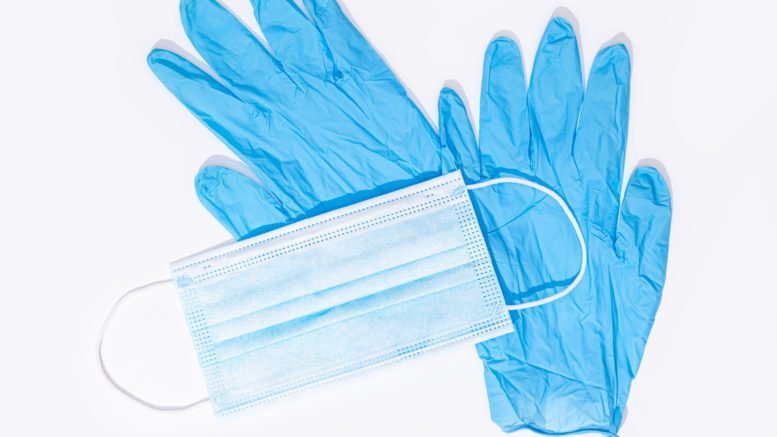New York City and its surrounding metro area have emerged as an epicenter of the coronavirus disease 2019 (COVID-19) outbreak worldwide. A recent population survey for severe acute respiratory syndrome coronavirus 2 (SARS-CoV-2) antibodies among those in New York state shows a prevalence of 21.2% in New York City and 16.7% in Long Island. The aim of the study by Jeremias, et al. (2020) is to establish the rate of COVID-19 among healthcare workers by widespread screening for SARS-CoV-2 exposure.
Employees were tested with a reverse transcriptase–polymerase chain reaction (RT-PCR) test and an antibody test from March 1 to April 30, 2020, at a large tertiary community hospital in Roslyn, New York. The health system began offering antibody testing (Anti-SARS-CoV-2 ELISA [IgG] [EUROIMMUN US]; SARS-CoV2-IgG [Abbott]) on April 16, 2020, and encouraged all employees to be tested. Antibody testing was performed in workers who were asymptomatic or were previously symptomatic with no symptoms for at least 14 days. Hospital employees who had symptoms of COVID-19 were offered the RT-PCR test (cobas SARS-CoV-2 [Roche] and Xpert Xpress SARS-CoV-2 [Cepheid]). All testing was on a voluntary basis. Personal protective equipment (PPE) policy was based on Centers for Disease Control and Prevention guidelines and was dependent on risk of exposure. All employees caring for patients with COVID-19 were required to wear an N95 mask, isolation gown, and gloves. Healthcare workers involved with procedures that could generate aerosolized virus dispersal, such as mechanical intubation, required additional eye protection. Both χ2 and t tests were used to generate P values and 95% CIs to analyze categorical variables. All statistical analyses were performed using SAS version 9.4 (SAS Institute). The Institutional Review Board at St Francis Hospital approved the study and waived the need for informed consent due to its retrospective nature and anonymization of all employee data.
Among 3,046 employees, 1699 (56%) underwent antibody testing, 617 (20%) underwent RT-PCR testing, and 359 (12%) underwent both. The average (SD) age among all employees was 42.8 (13.8) years and 2137 (70%) were women. When comparing employees who elected to undergo either form of testing vs those who did not, there were no meaningful differences with respect to age, job title, or work area.
There were 167 employees (9.8%) who tested positive for antibodies. There was no significant difference in antibody positive rates across job titles or work areas. When comparing the prevalence of antibodies among hospital employees with the rate reported by the state of New York for the general public on Long Island, hospital employees had a significantly lower positive rate (9.9% vs 16.7%, P < .001).
Employees with positive antibody test results were similar in age (41.5 [SD, 13.5] vs 43.4 [SD, 13.7] years, P = .09) and sex (women 9.4% vs men 11.1%, P = .31). There was no significant difference between race as a whole. There was no significant difference in infection rates among those working in high vs low exposure areas (10.9% vs 10.9%, P = .99).
The findings of the present study indicate that the rate of SARS-CoV-2 infection among healthcare workers is lower than what has been reported for the general public in the surrounding region. Given that healthcare workers in hospitals are exposed to a much higher density of the virus, the researchers say this is strong evidence that current PPE practices are protective, easing healthcare workers’ concern and psychological distress.
Limitations of this study are that it is a single-center analysis from a large community hospital that has the capability to adequately supply PPE to all healthcare workers. The present results may therefore not be applicable to all healthcare settings. Testing for COVID-19 was offered on a voluntary basis, with most employees complying. While no differences were observed between those tested and those not tested, a potential selection bias cannot be completely excluded.
The researchers conclude that PPE, when available and properly used, confers protection and lower infection rates of COVID-19 among healthcare workers when compared with reported infection rates in the general public.
Reference: Jeremias A, et al. Prevalence of SARS-CoV-2 Infection Among Health Care Workers in a Tertiary Community Hospital. JAMA Intern Med. Published online August 11, 2020. doi:10.1001/jamainternmed.2020.4214

Be the first to comment on "When Donned Properly, PPE Confers Protection and Lower COVID-19 Infection Rates Among Healthcare Personnel"